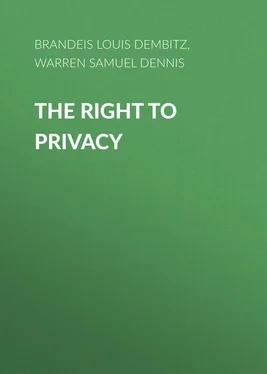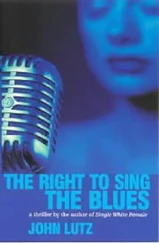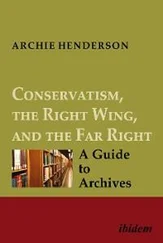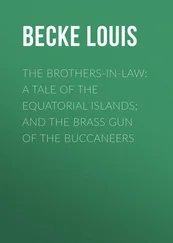Louis Brandeis - The Right to Privacy
Здесь есть возможность читать онлайн «Louis Brandeis - The Right to Privacy» — ознакомительный отрывок электронной книги совершенно бесплатно, а после прочтения отрывка купить полную версию. В некоторых случаях можно слушать аудио, скачать через торрент в формате fb2 и присутствует краткое содержание. Жанр: foreign_antique, foreign_prose, на английском языке. Описание произведения, (предисловие) а так же отзывы посетителей доступны на портале библиотеки ЛибКат.
- Название:The Right to Privacy
- Автор:
- Жанр:
- Год:неизвестен
- ISBN:нет данных
- Рейтинг книги:5 / 5. Голосов: 1
-
Избранное:Добавить в избранное
- Отзывы:
-
Ваша оценка:
- 100
- 1
- 2
- 3
- 4
- 5
The Right to Privacy: краткое содержание, описание и аннотация
Предлагаем к чтению аннотацию, описание, краткое содержание или предисловие (зависит от того, что написал сам автор книги «The Right to Privacy»). Если вы не нашли необходимую информацию о книге — напишите в комментариях, мы постараемся отыскать её.
The Right to Privacy — читать онлайн ознакомительный отрывок
Ниже представлен текст книги, разбитый по страницам. Система сохранения места последней прочитанной страницы, позволяет с удобством читать онлайн бесплатно книгу «The Right to Privacy», без необходимости каждый раз заново искать на чём Вы остановились. Поставьте закладку, и сможете в любой момент перейти на страницу, на которой закончили чтение.
Интервал:
Закладка:
Samuel D. Warren, Louis D. Brandeis
The Right to Privacy
THE RIGHT TO PRIVACY
"It could be done only on principles of private justice, moral fitness, and public convenience, which, when applied to a new subject, make common law without a precedent; much more when received and approved by usage."
Willes, J., in Millar v. Taylor, 4 Burr. 2303, 2312.That the individual shall have full protection in person and in property is a principle as old as the common law; but it has been found necessary from time to time to define anew the exact nature and extent of such protection. Political, social, and economic changes entail the recognition of new rights, and the common law, in its eternal youth, grows to meet the demands of society. Thus, in very early times, the law gave a remedy only for physical interference with life and property, for trespasses vi et armis . Then the "right to life" served only to protect the subject from battery in its various forms; liberty meant freedom from actual restraint; and the right to property secured to the individual his lands and his cattle. Later, there came a recognition of man's spiritual nature, of his feelings and his intellect. Gradually the scope of these legal rights broadened; and now the right to life has come to mean the right to enjoy life, – the right to be let alone; the right to liberty secures the exercise of extensive civil privileges; and the term "property" has grown to comprise every form of possession – intangible, as well as tangible.
Thus, with the recognition of the legal value of sensations, the protection against actual bodily injury was extended to prohibit mere attempts to do such injury; that is, the putting another in fear of such injury. From the action of battery grew that of assault. 1 1 Year Book, Lib. Ass., folio 99, pl. 60 (1348 or 1349), appears to be the first reported case where damages were recovered for a civil assault.
Much later there came a qualified protection of the individual against offensive noises and odors, against dust and smoke, and excessive vibration. The law of nuisance was developed. 2 2 These nuisances are technically injuries to property; but the recognition of the right to have property free from interference by such nuisances involves also a recognition of the value of human sensations.
So regard for human emotions soon extended the scope of personal immunity beyond the body of the individual. His reputation, the standing among his fellow-men, was considered, and the law of slander and libel arose. 3 3 Year Book, Lib. Ass., folio 177, p. 19 (1356), (2 Finl. Reeves Eng. Law, 395) seems to be the earliest reported case of an action for slander.
Man's family relations became a part of the legal conception of his life, and the alienation of a wife's affections was held remediable. 4 4 Winsmore v. Greenbank, Willes, 577 (1745).
Occasionally the law halted, – as in its refusal to recognize the intrusion by seduction upon the honor of the family. But even here the demands of society were met. A mean fiction, the action per quod servitium amisit , was resorted to, and by allowing damages for injury to the parents' feelings, an adequate remedy was ordinarily afforded. 5 5 Loss of service is the gist of the action; but it has been said that "we are not aware of any reported case brought by a parent where the value of such services was held to be the measure of damages." Cassoday, J., in Lavery v. Crooke, 52 Wls. 612, 623 (1881). First the fiction of constructive service was invented; Martin v. Payne, 9 John. 387 (1812). Then the feelings of the parent, the dishonor to himself and his family, were accepted as the most important element of damage. Bedford v. McKowl, 3 Esp. 119 (1800); Andrews v. Askey, 8 C. & P. 7 (1837); Phillips v. Hoyle, 4 Gray, 568 (1855); Phelin v. Kenderdine, 20 Pa. St. 354 (1853). The allowance of these damages would seem to be a recognition that the invasion upon the honor of the family is an injury to the parent's person, for ordinarily mere injury to parental feelings is not an element of damage, e. g. , the suffering of the parent in case of physical injury to the child. Flemington v. Smithers, 2 C. & P. 292 (1827); Black v. Carrolton R. R. Co., 10 La. Ann. 33 (1855); Covington Street Ry. Co. v. Packer, 9 Bush, 455 (1872).
Similar to the expansion of the right to life was the growth of the legal conception of property. From corporeal property arose the incorporeal rights issuing out of it; and then there opened the wide realm of intangible property, in the products and processes of the mind, 6 6 "The notion of Mr. Justice Yates that nothing is property which cannot be earmarked and recovered in detinue or trover, may be true in an early stage of society, when property is in its simple form, and the remedies for violation of it also simple, but is not true in a more civilized state, when the relations of life and the interests arising therefrom are complicated." Erie, J., in Jefferys v. Boosey, 4 H. L. C. 815, 869 (1854).
as works of literature and art, 7 7 Copyright appears to have been first recognized as a species of private property in England in 1558. Drone on Copyright, 54, 61.
goodwill, 8 8 Gibblett v. Read, 9 Mod. 459 (1743), is probably the first recognition of goodwill as property.
trade secrets, and trade-marks. 9 9 Hogg v. Kirby, 8 Ves. 215 (1803). As late as 1742 Lord Hardwicke refused to treat a trade-mark as property for infringement upon which an injunction could be granted. Blanchard v. Hill, 2 Atk. 484.
This development of the law was inevitable. The intense intellectual and emotional life, and the heightening of sensations which came with the advance of civilization, made it clear to men that only a part of the pain, pleasure, and profit of life lay in physical things. Thoughts, emotions, and sensations demanded legal recognition, and the beautiful capacity for growth which characterizes the common law enabled the judges to afford the requisite protection, without the interposition of the legislature.
Recent inventions and business methods call attention to the next step which must be taken for the protection of the person, and for securing to the individual what Judge Cooley calls the right "to be let alone." 10 10 Cooley on Torts, 2d ed., p. 29.
Instantaneous photographs and newspaper enterprise have invaded the sacred precincts of private and domestic life; and numerous mechanical devices threaten to make good the prediction that "what is whispered in the closet shall be proclaimed from the house-tops." For years there has been a feeling that the law must afford some remedy for the unauthorized circulation of portraits of private persons; 11 11 8 Amer. Law Reg. N. S. 1 (1869); 12 Wash. Law Rep. 353 (1884); 24 Sol. J. & Rep. 4 (1879).
and the evil of the invasion of privacy by the newspapers, long keenly felt, has been but recently discussed by an able writer. 12 12 Scribner's Magazine, July, 1890. "The Rights of the Citizen: To his Reputation," by E. L. Godkin, Esq., pp. 65, 67.
The alleged facts of a somewhat notorious case brought before an inferior tribunal in New York a few months ago, 13 13 Marion Manola v. Stevens & Myers, N. Y. Supreme Court, "New York Times" of June 15, 18, 21, 1890. There the complainant alleged that while she was playing in the Broadway Theatre, in a rôle which required her appearance in tights, she was, by means of a flash light, photographed surreptitiously and without her consent, from one of the boxes by defendant Stevens, the manager of the "Castle in the Air" company, and defendant Myers, a photographer, and prayed that the defendants might be restrained from making use of the photograph taken. A preliminary injunction issued ex parte , and a time was set for argument of the motion that the injunction should be made permanent, but no one then appeared in opposition.
directly involved the consideration of the right of circulating portraits; and the question whether our law will recognize and protect the right to privacy in this and in other respects must soon come before our courts for consideration.
Интервал:
Закладка:
Похожие книги на «The Right to Privacy»
Представляем Вашему вниманию похожие книги на «The Right to Privacy» списком для выбора. Мы отобрали схожую по названию и смыслу литературу в надежде предоставить читателям больше вариантов отыскать новые, интересные, ещё непрочитанные произведения.
Обсуждение, отзывы о книге «The Right to Privacy» и просто собственные мнения читателей. Оставьте ваши комментарии, напишите, что Вы думаете о произведении, его смысле или главных героях. Укажите что конкретно понравилось, а что нет, и почему Вы так считаете.












